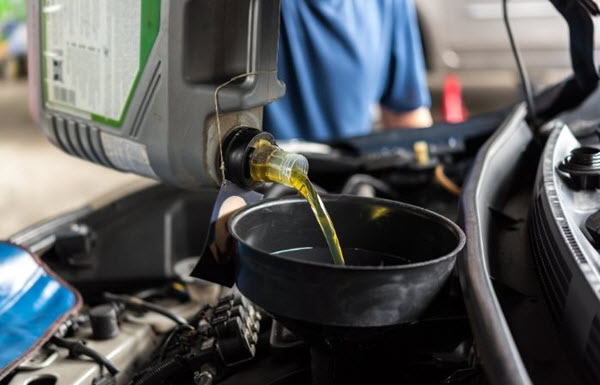Did you know that April is National Car Care Month? There’s a reason for this. After months of harsh weather, cold temperatures, and road salt exposure, your care will need a little extra care. Wave goodbye to the harsh winter months and prepare for warm, safe weather driving with these easy car tips for spring and summer below.
There is arguably a lot you could do to your car at the end of winter, and this can get overwhelming very quickly. However, narrowing down the list into the things that you really should focus on will help you get organized and ready to tackle this project.
Schedule An Oil Filter And Oil Change

Why should you routinely change your oil? Motor oil works to lubricate your engine, so it’s not surprising that it will naturally pick up impurities especially if you live in a drier and dustier state. Changing both your engine oil and your filters will rid you of accumulated debris or sludge before they can do permanent damage to your engine.
Test Your Car Battery And Replace It If Necessary
Winter can be very hard on your car’s battery, and it may even kill it. Lower temperatures force your battery to work much harder by slowing down the chemical reactions. Now, higher temperatures are coming up quickly. These temperatures can evaporate your essential battery fluids and speed up the corrosion process. This could eventually kill your battery too. Avoid having the frustration of a car that won’t start by getting your car battery tested in the spring. If necessary, replace it before you get stranded.
Have Your Car Detailed Or Clean The Interior
With winter comes slush, mud, road salt, and more. These things can end up on the inside of your car from sticking to your boots, and they can create a mess in your interior. One option you have is to bring your car in to get detailed by a professional. However, you can also clean it yourself using this car-cleaning guide. It outlines everything you need to do to get a sparkling clean car that is ready for spring and summer adventures.
Refill Wiper Fluid And Replace Wiper Blades
Your windshield wipers are most likely looking worse for wear. This is especially true if you spent months clearing away ice and snow. Maybe they’re to the point where they’re chattering, smearing water across your windshield, or just not working well enough to give you a clear field of vision. If cleaning them doesn’t improve anything, then it’s time to replace the blades in time for the spring and summer thunderstorms and rain. Top off your wiper fluid while you’re at it.
Check Tire Tread And Pressure
Before you go out for the day, check your tire pressure. Adjust your tires based on your readings. You want your tire pressure to match the recommended tire pressure listed in your vehicle’s manual. It’s especially important to check between spring and winter because the temperature fluctuations can impact tire pressure. Generally speaking, your tires will gain or lose one pound per square inch for every 10-degrees of temperature change. Over-inflated or under-inflated tires can cause problems for you.
This is also a great time to check tire tread depth. If your tires don’t have enough tread on them, they won’t be able to grip the road as the manufactures designed them to. In turn, this could impact how well your vehicle handles in wet weather and how quickly you can stop. Grab a penny and do the penny test to check your tire depth tread and find out if you need new tires.
Replace Bulbs And Clean Your Lights
If you’ve found yourself squinting when you drive in the dark, you might need to give your lights a good cleaning. Just like the body of your car gets dirty, the taillights and headlights can too. Think of all the slush that splashes up on your car in the winter. Get a soft toothbrush and polish hazy headlights. Add a little baking soda to water to make a paste to help them shine brighter. If that doesn’t work, you may need to replace the bulbs.
Check And Top-up Your Emergency Kit
While this isn’t technically vehicle maintenance, it’s still a good idea to get in the habit of checking and topping up your emergency kit as needed. Make sure you have the basics at all times, like a first aid kit, cables, reflective triangles, tire gauge, drinking water, and flashlights. It’s also a good idea to have reserve vehicle fluids like oil, brake fluid, and transmission fluid on hand. A gallon of water is a must too.
Bottom Line
Whether you plan to drive across town or across the country this spring and summer, it’s a good idea to bring your car in for a courtesy check. The technicians will usually look at your fluid levels, tires, wipers, lights, belts, and battery at the minimum to spot problems. The goal is to get any required maintenance out of the way to extend the life of your car and make sure you have a reliable form of transportation in every season.